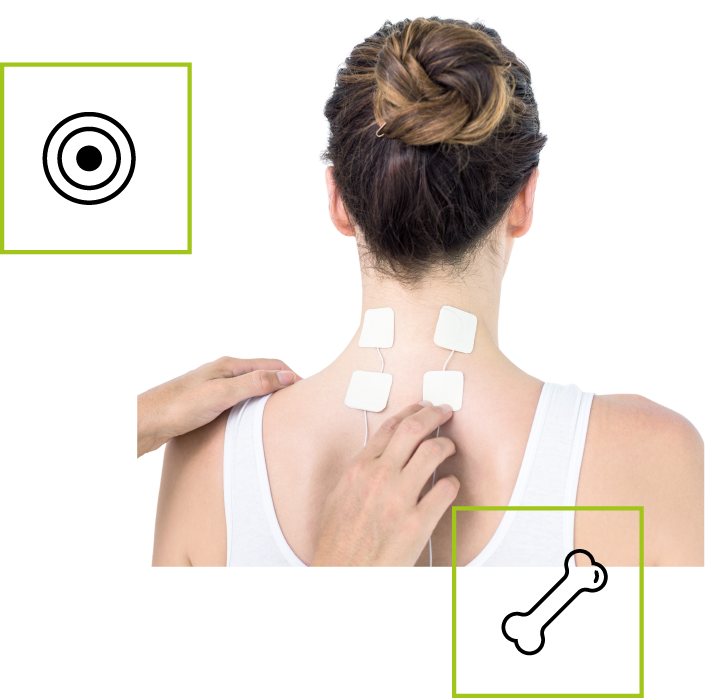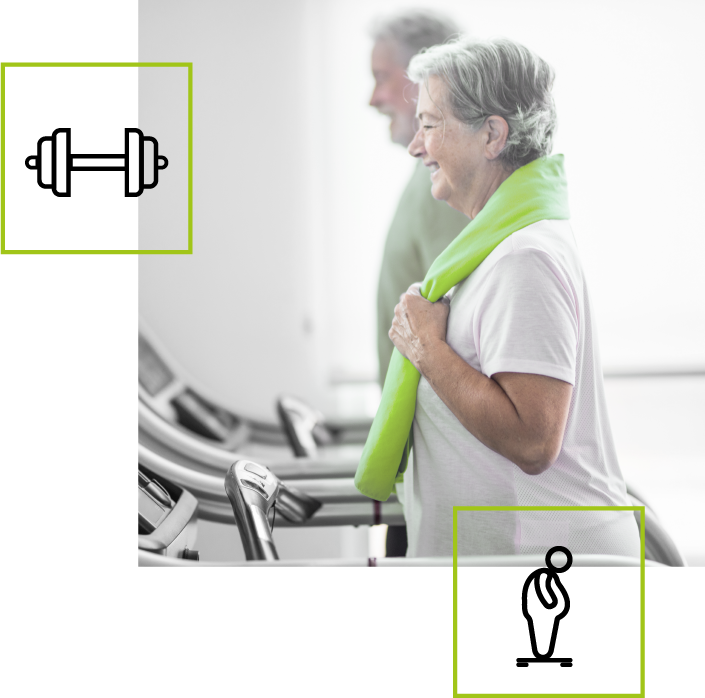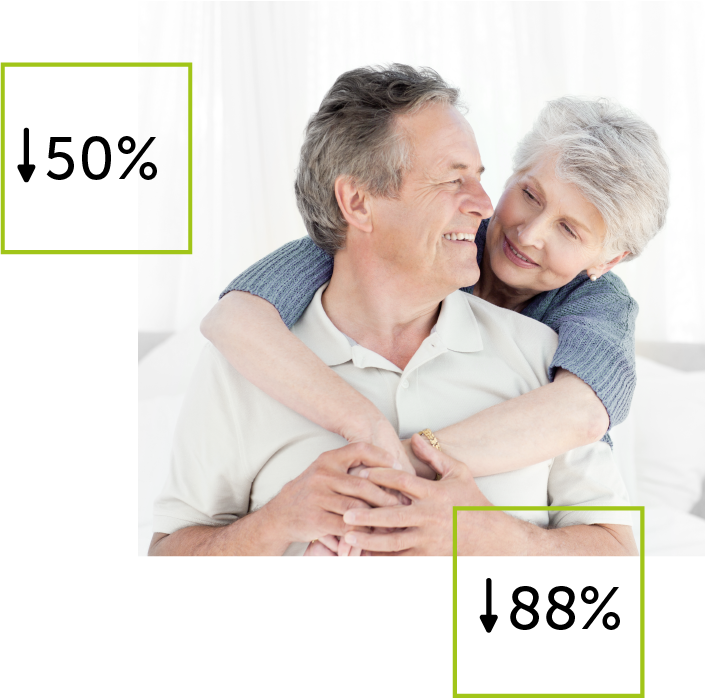Vibrotherapy - effective against chronic pain
Vibrotherapy has an analgesic effect on both acute and chronic pain.
How does it work?
Vibrotherapy relieves pain through several mechanisms: it stimulates superficial and deeply localized pain receptors, raising the pain threshold long-term; it improves blood and lymph circulation; it promotes inflammation relief and improves bone mineral density. In addition, therapeutic vibration relaxes muscles and combats excessive tension and strengthens muscles, such as those in the spinal column, which is especially important for degenerative changes.


When and for whom?
Vibrotherapy can be a very valuable complement to therapy directed against chronic pain, especially it can be a very good preparation for physical exercises, which are difficult to approach while feeling pain, and which are so important in rehabilitation after injuries, or in improving the daily life of seniors or overweight people.
Effectiveness
A study by Polish researchers reported a 50% reduction in pain intensity after vibrotherapy sessions for persons suffering from chronic pain and an 88% reduction in those with acute pain. Study participants significantly reduced the amount of painkillers they took (by 55% for patients with chronic pain) and saw an improvement in their quality of life.

Boucher JA, Abboud J, Nougarou F, Normand MC, Descarreaux M. The Effects of Vibration and Muscle Fatigue on Trunk Sensorimotor Control in Low Back Pain Patients. PLoS One. 2015 Aug 26;10(8):e0135838
Benefits of vibrotherapy

No side effects

Action confirmed by scientists and practitioners

Perceptible effects from 1 treatment

Long-lasting effects through systematic use
Choose the right product
We will help you select a set of modules that suits your conditions.
The most common causes of chronic pain
Today it is believed that the most common type of pain is the so-called tension headaches. It is estimated that up to 80% of Europeans suffer from such an ailment during the year. However, the main cause of Europeans’ inability to work is pain in the lower back, the so-called lumbosacral region. About 90% of people suffer from non-specific pain, related to overloading of the various structures that make up the spine, while no specific cause can be attributed. It is felt most strongly in the lower back, but sometimes radiates from the outside of the thigh up to the knee. The most painful is pain caused by root syndrome or spinal canal stenosis.
The most common types of chronic pain
Today it is believed that the most common type of pain is the so-called tension headaches. It is estimated that up to 80% of Europeans suffer from such an ailment during the year. However, the main cause of Europeans’ inability to work is pain in the lower back, the so-called lumbosacral region. About 90% of people suffer from non-specific pain, related to overloading of the various structures that make up the spine, while no specific cause can be attributed. It is felt most strongly in the lower back, but sometimes radiates from the outside of the thigh up to the knee. The most painful is pain caused by root syndrome or spinal canal stenosis.
The body’s reactions to chronic pain
There are many changes in the body of a person suffering from chronic pain, and they include both physical and psychological aspects. The noticeable reaction is increased muscle tension in the painful area. In the case of chronic lumbar pain, over time there may even occur a curvature of the spine, which results precisely from excessive muscle tension. Chronic pain also affects brain structures and functions. People suffering from this type of pain quite often experience memory and attention deficit disorders, have trouble sleeping, and may be accompanied by insomnia. Chronic pain is very often associated with depression. In addition, sufferers experience a range of negative emotions: from anxiety to irritation to anger. Such emotions are most understandable when someone is in pain, does not know the cause of the pain, and subsequent visits to a specialist and implemented treatment do not bring relief (or only temporary relief). They can be devastating to both the patient and their family, so psychological help is also important in chronic pain cases.
Treatment of chronic pain – a multidirectional approach
When we experience pain, we usually almost automatically reach for over-the-counter painkillers. While they can handle acute pain quite well, they are much less effective or even ineffective for chronic pain (if they can't “find the source of the pain”, they don’t provide relief). In addition, none of these agents should be taken for more than 2 weeks. We always discourage the use of painkillers on your own – if pharmacology is to be part of chronic pain management, it should be administered only under the treating physician supervision. Outlining a treatment regimen for chronic pain is basically impossible, as methods should be selected individually. In addition, the treatment of chronic pain is multidirectional or even holistic in nature and includes many different therapies, often used in combination. These include pharmacotherapy, physiotherapy and physical therapy (physical treatments, such as electrotherapy, heat or cold therapy, vibrotherapy), therapeutic blocks (of peripheral nerves and the sympathetic nervous system), surgical treatment, used most often when some structures press on the nerves, psychological treatment (mainly cognitive-behavioural therapy). If the cause of chronic pain is known, the first step is to try to cure the ailment in question. This is not always possible and many diseases can only be inhibited. This includes, for example, rheumatoid arthritis or osteoarthritis. If the causes of the pain remain unknown, a physician focuses on treating the pain and improving the patient’s quality of life. Specialists have been emphasizing the importance of non-pharmacological methods of treating chronic pain for years, especially physiotherapy and rehabilitation. No less important are physical exercises under the guidance of an instructor (kinesitherapy). Of course, they are performed when the pain is at least partially relieved. Physiotherapy and physical therapy approaches have at least a few main goals: analgesic action (depending on the location and origin of the pain, these may include electrotherapy, cryotherapy, heat therapy or vibration therapy); muscle strengthening and/or relaxation action (muscle strengthening is particularly important for spinal pain or joint pain - better stabilization protects structures from degradation - in turn, relaxing overly tense muscles can reduce pain sensations on the one hand, and counteract changes that can be caused by adopting a “pain posture” on the other - e.g. bending the body forward in the case of pain in the lumbar spine); improving the quality of life (we all know how important physical activity is for physical and mental health, unfortunately, for a person suffering from chronic pain, performing even the simplest exercises is often almost unimaginable – in such a situation, a physiotherapist can come to the rescue, and the satisfaction from jointly performed exercises will certainly improve mental well-being and perhaps motivate to take on further challenges that at the moment seem impossible). Chronic pain is said to become a suffering for the subject. As a result, it can lead to depression, social isolation, and “shutting down in pain.” This makes treatment even more difficult. That's why it's so important to use psychological help, so you can understand the emotions you're feeling, tame your fears, learn to cope with pain, manage stress and open up to others, including – your closest family members.






